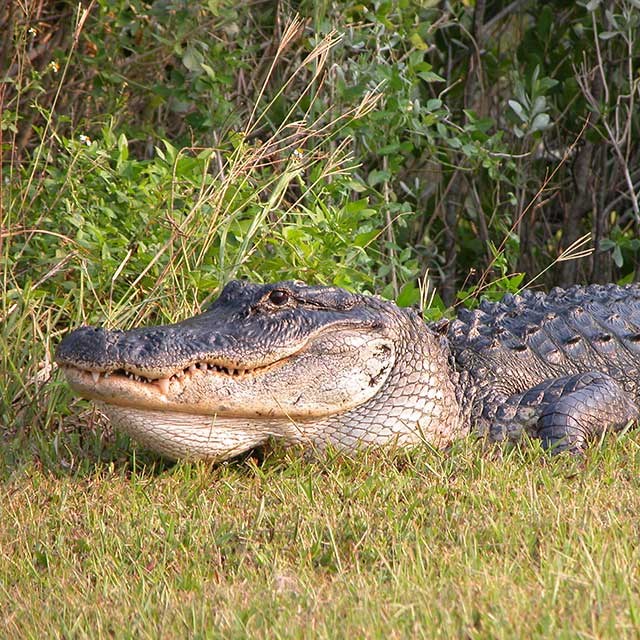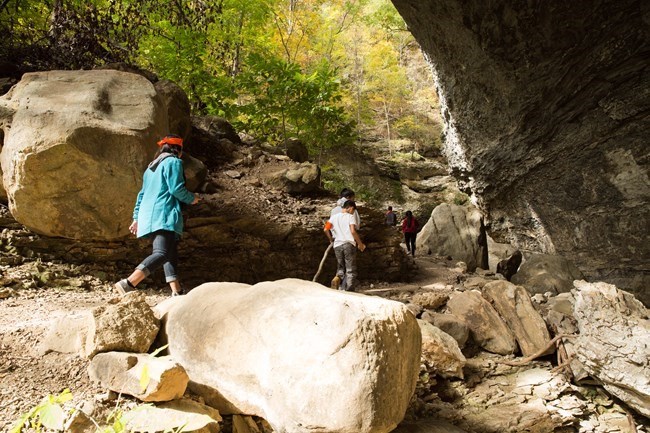
The Lower Mississippi Delta (hereafter referred to as the Delta) is a vast and vital part of the American landscape. This broad, alluvial valley provides habitat and ecological support for a wide variety of flora, fauna, and aquatic species integral to health of the north American continent. The Mississippi River forms the most important bird and waterfowl migration corridor on the continent. The river bottoms comprise North America’s largest wetland area and bottomland hardwood forest. More than 20% of the nation’s duck population migrates along the river and one-third of the freshwater fish species in North America live in the river.
In addition to the bottomland hardwood forests in the Delta, the is also home to upland forests of deciduous and coniferous varieties. They are found in the hills and elevated tracts.The dynamic character of the Delta’s ever-changing natural processes are found in a variety of fascinating events — the New Madrid earthquakes of 1811—1812, the devastating flood of 1927, and the geologic curiosity of Crowley’ s Ridge. The region’s national natural landmarks and state natural areas all attest to the natural processes at work in the Delta.Human manipulation of the environment as a response to these natural processes or as expressions of cultural beliefs can be seen across the Delta landscape. From Poverty Point’s massive effigy earthworks and adjacent dwelling sites to the monumental flood control devises on the Mississippi River today, natural resources have been used over and over again for ritual, survival, trade, and/or profit.American Indian agricultural practices were probably the single greatest environmental influence before European colonization. Slash-and-bum farming techniques eventually gave way to intensive maize cultivation. This emergence of maize-based food production changed the social and political fabric of Mississippian society. As they began to rely on more centralized authority and economic redistribution, their dependence on local resources increased and brought pressure on local resource stores in the surrounding forests, streams, and coastal fisheries. However, the long-term effects these early Indian groups had on the environment pales in comparison with the Euroamerican settlements that followed. Most of the remains of the mound building societies have faded from the landscape or have been bulldozed into the land with the technological advances of the last two centuries.
The water-control projects of the Mississippi River and its tributaries are manmade wonders within the Delta. The dams, levees, cutoffs, diversions, and other water-control facilities, like the Atchafalaya diversion structures and the Caernarvon freshwater structure of southern Louisiana, are marvels of engineering. The structures are often monumental in size, enormously complex in engineering, and are substantial in their effect on the natural environment.The Delta’s renowned agricultural productivity is a direct reflection of the region’s fertile alluvial soils, the temperate climate (average yearly temperature of 54-65 degrees F), and the extended growing seasons (200-340 days of frost-free weather annually). Much of the nation’s soybeans, rice, sugar cane, feed grains, and cotton are produced on Delta farms. Between 55% and 60% of the land area in the Delta is utilized as cropland. By comparison elevated portions of the region use between 6% and 40% of available land area for crops.Natural resources have been extracted from the Delta since before European settlement. Evidence shows Indian groups traded throughout much of the north American continent. Deposits of salt, coal, and native clay soil have been exploited for use by successive generations of the Delta’s human inhabitants. Oil and gas exploration began shortly after the turn of the 20th century and now oil and gas wells, petro-chemical manufacturing plants, paper mills, sugar refineries, and sewage treatment plants dot the landscape.Water quality has been and continues to be the prime pollution concern for the Delta. The extensive water pollution has resulted from years of discharging petrochemicals, municipal sewage and wastewater, and farm chemical runoff into the watershed. In addition the deforestation and loss of wetland habitat through much of the region has added to poor water quality.
Cleanup efforts on the Mississippi River, its tributaries and its critical habitats have been a primary concern for local residents, state and federal government agencies, and regional environmental groups. Laws and regulations as well as changes in public attitudes toward the natural environment and its importance for human survival have led to steady improvements in the Delta.
GEOLOGY
About 18,000 years ago a continental glacier covered North America. This continental glaciation event, with its gradual melting period from 12,000 to 7,500 years ago, was the last in a series of continental glaciers that have formed and then receded over the last 25 million years. Although no glacier reached the lower Mississippi Delta region its influences have forged and transformed the surrounding lands. As the glaciers melted and reformed, the Mississippi and its tributaries carved valleys and created floodplains across the region. The floodplains and river valleys were further altered by changes in sea level over time. These changes created the terraces that mark the region today. As the glaciers receded, runoff increased to five times the volume of today’s rivers and streams. High waterflow combined with high sediment loads of the glacial melt-waters created a braided stream patter along the Mississippi, Ohio, and other streams (Saucier 1994).
As the volume of water discharged into the Mississippi valley dropped, the Mississippi River flow evolved into its existing meandering pattern. The continental glaciers had gouged out millions of tons of bedrock and crushed and weathered the rock into various types of sediment, the largest amounts being silt and sand. The resulting sediment in the form of loess deposits (wind-transported deposits) and fluvial deposits (water-transported deposits) were transported from north and west of the region were redeposited within the Delta in layers tens of meters thick. The Delta’s surface topography is a result of these deposits from the glaciers.
At the confluence of the Ohio and Mississippi Rivers the average floodplain elevation is approximately 325 feet. At sea level on the Gulf of Mexico, the Mississippi River averages an elevation drop of less than a foot per mile for extended stretches of 10 or more miles. This combination of characteristics, high sediment loads mentioned above, and low elevation drops over long distances produce the Mississippi River’s meandering pattern. This type of river loops back and forth across a floodplain in an ever changing pattern as the stream flows to the sea. The landforms created by a meandering river are called meander belts. Meander belts are a conglomeration of several landforms, including natural levees, oxbow lakes, distributaries, abandoned channels, point bars, back swamps, crevasse splays, chute cutoffs, and others (Saucier 1994). The meandering Mississippi, Red, Yazoo, Arkansas, Black and other study area rivers are part of a dynamic geological system. The meandering river system is constantly changing the coarse and topography of the region’s rivers and their associated landforms.
While the meandering river systems, their depositional formations, and the continental loess and alluvial deposits constitute most of the observable geological features of the central core of the study area, other geological features are also found. These features include the Ouachita Mountains and Crowley’s Ridge in Arkansas, the Ozark Plateau in Missouri and Arkansas, the Petrified Forest in Mississippi, and other basins, plateaus, and topographical components.
The Gulf Coast landforms of Louisiana and Mississippi are a product of the sediment dropped at the confluence between the Gulf of Mexico and the Mississippi River. The coastal deltas and coastal landforms are changing bodies of sediment that are constantly being built by the deposition of the Mississippi River and torn down by the erosional effects of the Gulf of Mexico.
Sediment washed along the coast of Louisiana and Mississippi by Gulf wave action have produced the beaches, coastal marshes, and baffler islands found along the study area’s coast. Mississippi channel shifts over time have created new coastal areas and left other areas to the erosive power of Gulf waters.

FOREST RESOURCES
The Delta’s forests, hardwood and pine, have been heavily used since the 19th century and very few old growth trees remain. Historically trees have been harvested for the fabrication of railroad cross ties, the rebuilding of Chicago after the disastrous fire of 1871, the construction of the Panama Canal, as well as home furnishings such as cabinets, flooring, moldings, and furniture.
Today the Delta’s forests supply pulpwood for paper products (approximately 30% of total production) and saw timber for lumber (approximately 60% of total production). The remaining 10% of products include lumber and chip board, telephone poles, construction pilings, and veneer logs for furniture, cabinets, and other home furnishings.
Demand for specialty tree species for specific markets is high. For example, persimmon logs are used to manufacture golf clubheads, and Paulownia trees (originally imported from Asia) are exported to meet market demands in Japan.
AGRICULTURE
The Delta’s fertile soils, temperate climate, and extended growing seasons are a boon to the region’s agriculture production. Soybeans, rice, sugar cane, various feed grains, hay, and cotton are produced on study area farms. Approximately 55% and 60% of the land area in the Delta is used for agricultural purposes. Agriculture has a history going back 200 years and has always been important to the economics of the region.
The soils types of the Delta include the soil orders Inceptisols (in alluvial bottomland), Alfisols (in areas of loess), and Mollisols. The primary suborders of soils found are Aquepts, Aqualfs, Udalls, and Udalfs. These soils are deep, moist, and rich in nutrients plants require. The soils commonly need to be drained of water before they can be productive but once drained the land supports high yields of almost any crop. The soils maintain their fertility because the Mississippi River and its tributaries have often flooded, depositing new sediment and replenishing the topsoil. The diverse plants that grow in the Delta are recycled into the soil as a mulch and benefit the soil as natural fertilizer. The soils are free of boulders and gravel,and maintain a sediment size no greater than coarse sand and are easy to cultivate with modern farm machinery.
The climate of the Delta is ideal for farming as large sections maintain moderate temperatures during most of the 200+ days of the growing season. The water supply from the rivers, wells, and annual rainfall seldom leave the Delta short of water for crops. During periods of drought; irrigation systems supply most of the Delta with the water needed for agriculture.
Occasional hurricanes (approximately one every 7 to 15 years) ravage and flood areas of the coastal Delta and may produce damaging effects a few hundred miles inland. These hurricane events cause crop and property damage from flooding, erosion, and high winds; however, the hurricanes are relatively few and the Delta bounces back quickly.
The average rainfall for the area is 45 to 65 inches per year and usually arrives in the form of light to moderately heavy thunderstorms. Snowfall in the region is negligible, and freezing weather is absent in the coastal portions of the study area. Freezing conditions in the northern sections of the study area are confined to a few weeks a year, giving farmers opportunity to grow multiple crops.
MINERAL EXPLORATION AND EXTRACTION
The study area’s dominant mineral production is petroleum. Petroleum production is typically confined to Louisiana and the Louisiana Gulf Coast, supplying approximately 90% of the study area’s petroleum. The southern portions of Arkansas and Mississippi together add an additional 10% to the production total. While the oil reserves are now becoming depleted, the area continues to produce approximately 200,000 barrels of oil and 270 million cubic feet of natural gas annually. Oil and gas exploration has also stimulated petrochemical manufacturing throughout the Delta.
The production of petroleum and petrochemicals have added to a continuing pollution problem in the Delta. Hundreds of millions of pounds of toxic chemicals are released into the study area every year; for example, 162 million pounds of toxic chemicals were released into the environment in Louisiana in 1994 (State of Louisiana 1996). However, this represents a rapid improvement in the control of toxic waste releases. In Louisiana, toxic chemical releases have dropped from 856 million pounds in 1987 to the aforementioned 162 million pounds in 1994, an improvement of 81%. Similar toxic waste reductions are occurring throughout the region.
Metals mining in the study area is limited to modest iron mining operations. Construction materials such as sand, clay, marble, limestone, and slate, are also extracted and are used locally. There are also moderate salt mining operations located in Louisiana.
FISHERIES
The Mississippi River supports one of the most diverse fisheries in the world. At least 183 species of freshwater fish live in the Delta (Laroe et al. 1995). Minnow, darter, perch, sturgeon, and paddlefish species are among the most common. However; native fish stocks have been declining in number. Approximately 6% of the native fish species in the Delta are found on the endangered, threatened, or special concern lists of the U.S. Fish and Wildlife Service.
The decline of native fish species is a result of the reduced quantity and quality of available habitat. Other specific causes of decline include damming and channelization of the Mississippi and its tributaries, agricultural uses, deforestation, erosion, pollution, and introduced species. It is hoped that implementation of better land management practices and public and governmental programs will restore the fisheries and prevent further degradation of fishery resources.
The region’s rivers, numerous lakes, and other water impoundments, support aquaculture, commercial, and sportfishing. While native fish populations have declined, introduced and hatchery-supported sportfish are abundant. Fresh water sportfishing is focused on species of bass, warrnouth, sunfish, bluegill, crappie, sturgeon, and catfish. The state fisheries management offices provide for much of the sportfish in the region through fish hatchery production. Coastal saltwater sportfishing is concentrated on the following Gulf species: snapper, redfish, flounder, trout, and pompano. Commercial fishing of finned fish and shellfish in the Gulf of Mexico is centered (in dollars) on shrimp (54% of the total value of all types), menhaden ( about 30%), oysters (about 7%), with crab and a variety of other species filling in the remaining 9% of the commercial catch (Kniffen and Hilliard 1988).
Commercially fished freshwater species include: catfish, spoonbill, buffalo, garfish, and other minor species. Commercial fishing has been in a state of decline since the early 1970s. This is primarily due to habitat loss, environmental contamination, and conflicts with navigation.
Aquaculture (fish farming) is growing in importance with the decline in commercial fishing stocks. The main species of farmed fish is catfish. The effects of aquaculture on the Delta’s ecosystem is not fully under-stood at this time but is under study by the U.S. Fish and Wildlife Service and various other state agricultural and wildlife agencies.

ENDANGERED AND EXOTIC SPECIES
The Delta, once home to the panther, wolf, and bison, is now facing the extinction of more plant and animal species as natural and man-made processes adversely impact critical habitats across the region. Some of the more widely known endangered, threatened, and species of special concern listed by the U.S. Fish and Wildlife Service include the bald eagle, the peregrine falcon, the Higgins eye mussel, the fat pocketbook mussel, the pallid sturgeon, the Blandings turtle, the Massassaugua rattlesnake, the relict darter, and the Louisiana black bear.
The region contains habitat types that are critical to endangered species. For example the Louisiana black bear is primarily found in bottomland hardwood and floodplain forests. Home ranges for black bears vary from 24 to 400 square miles. Various species of mussels depend on unique river bottom conditions for survival. Sustaining viable populations of the various species of threatened neotropical migratory birds depends on maintaining continuous habitat areas along the Mississippi flyway.
Wildlife refuges managed by the U.S. Fish and Wildlife Service and other federal and state-owned properties preserve habitat for endangered and threatened species. Private companies, individual landowners, and special interest groups are trying to create policies to ensure the survival of quality habitat.
Environmentally damaging exotic species have been introduced to the study area, including the nutria (a rodent), zebra mussel and carbicula clams, and 30 species of exotic fish. Damaging plant species such as kudzo, water hyacinth, and purple loosestrife also inhabit the Delta region. These exotic species often replace native species by either directly destroying them or by appropriating their natural habitat. Plants like the water hyacinth and purple loosestrife have severely altered large areas of wetland by replacing valuable native species. The coast and marshes of Louisiana have been severely damaged by nutria, causing soil erosion and marshland plant destruction. Native shellfish and snails are being destroyed by zebra mussel. The zebra mussel and carbicula clams clog municipal water intake pipes.
Eradication programs have been implemented by both federal and state government agencies to suppress many of these exotic species. The result of the eradication programs so far has been mixed; however, with improvements in eradication techniques, successful reductions in exotic species may be possible in the near future.
Last updated: February 4, 2022
